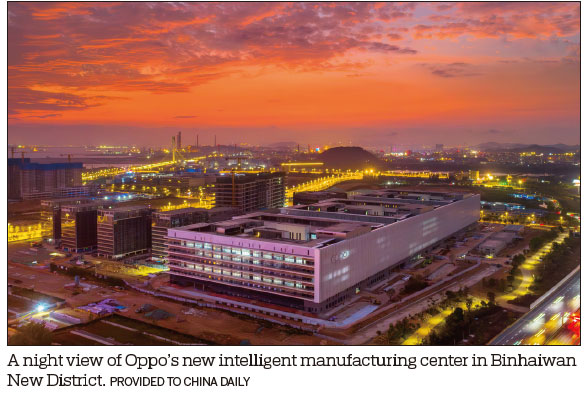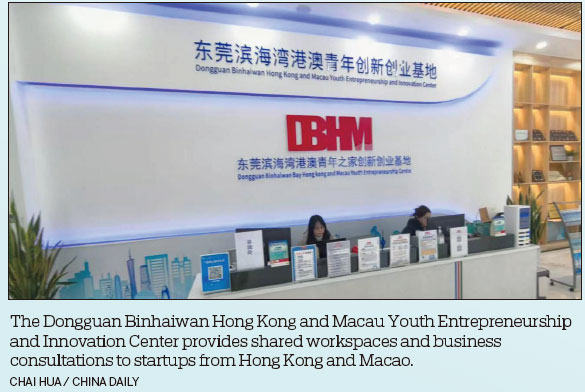
Dongguan's Binhaiwan New District is a new platform for cooperation between Dongguan and Hong Kong under the Outline Development Plan for the Guangdong-Hong Kong-Macao Greater Bay Area.
The guideline supports Dongguan and the special administrative region in creating a cluster of headquarters of high-end manufacturing industries, as well as developing modern service industries and a research and development base for strategic emerging industries in the new district.
Located on the eastern bank of the Pearl River Estuary, the coastal district is in the middle of Qianhai special zone in Shenzhen and Guangzhou's Nansha District.
It spans a total planned area of 84.1 square kilometers, with a land area of 50.5 square kilometers. Established in 2017, it had accumulated investments of up to 30 billion yuan ($4.17 billion) by the end of last year.
Binhaiwan New District has attracted several major industrial projects, including Oppo's intelligent manufacturing center and database, and a science park built by Genzon Group, which operates a landmark business zone of leading technology companies in Shenzhen's Nanshan district.
The district has also set up the International Open Innovation and Entrepreneurship Community, providing free office space, investment, capital subsidies and living facilities for startups in the Greater Bay Area, especially those engaged in the digital economy, life science and new energy industries. So far, more than 160 innovative teams have incubated there.
Hong Kong entrepreneur Alfa Chan Chi-fu who led an incubated team in the IOIEC said many factories are located near the offices, making communication and the production process convenient for them.

Large manufacturers like Oppo and Vivo have also established new research and production bases in the district, and Chan hopes to collaborate with them.
"Office rent here is much cheaper compared with Shenzhen and Guangzhou. For us, starting with low costs is relatively safer," said Chan, whose company produces innovative liquid silicone rubber and injection molded products.
Ye Shaoqiang, deputy director of the Binhaiwan district administration, said one of the area's key objectives is to serve Hong Kong's development. He said they plan to invite Hong Kong Science and Technology Parks Corp to set up a branch there.
"We're also building a new ferry terminal linking (the zone with) Hong Kong and Macao. It's expected to be completed in three years, and travel to Hong Kong International Airport will be cut to 70 minutes."
Education and research are also integral parts of Binhaiwan's development. The Greater Bay Area University, due to be completed by late 2026, will set up a campus in the zone and cover an area of 2,100 acres (8.5 sq km). It will be positioned as a high-level, research-oriented university focusing on science and engineering disciplines.
A significant research facility is the New Generation Artificial Intelligence Industry Technology Research Institute, which prioritizes AI application in advanced manufacturing.
Xu Fan, a member of the council of the institute, said it is establishing an "industrial AI brain" system, and collaborating with numerous experienced factories in the city. By extracting data and summarizing artificial production experience, the institute trains the industrial AI brain and, in return, produces various AI products to empower the local manufacturing industry.

















